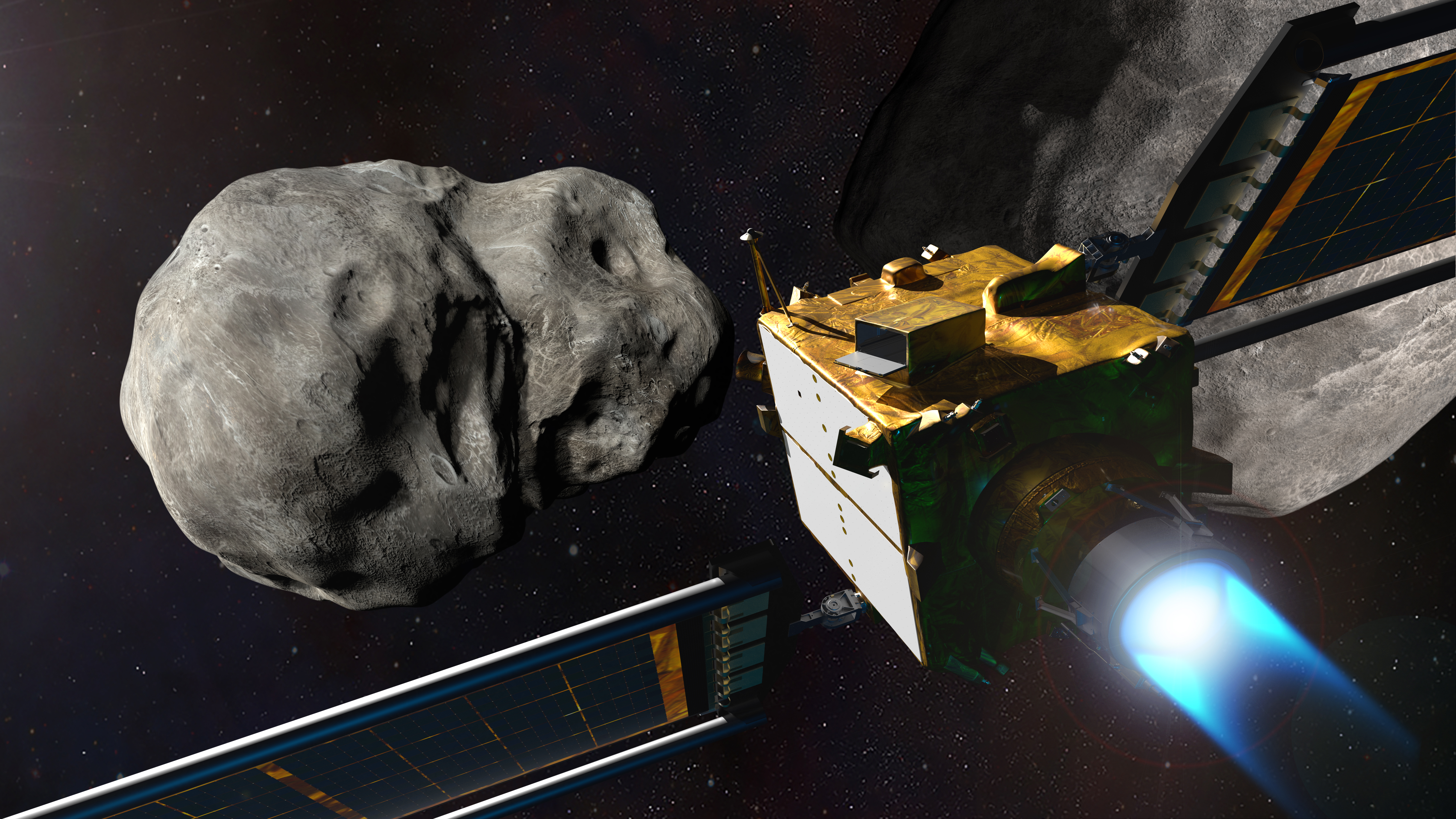Why DART is a mover and shaker in asteroid planetary defense: NASA science chief
"We're really excited every time our space missions protect life on Earth."
NASA's science chief says a spacecraft plunging towards an asteroid will be a big hit for planetary defense.
The Double Asteroid Redirection Mission (DART) is on a collision course with the asteroid moonlet Dimorphos and will arrive later today (Sept. 26). The spacecraft will broadcast its final few minutes live, which you can see here at Space.com via NASA.
The mission is the first-ever demonstrator of kinetic impact. That's one method by which we can nudge threatening asteroids out of the way, Thomas Zurbuchen, NASA's associate administrator for the science mission directorate, told Space.com.
"When it comes to the asteroid defense business, it's really hard to do that in space," Zurbuchen said, noting NASA chose the double asteroid system because it's slightly easier to move an asteroid moonlet than the parent asteroid, called Didymos.
Related: NASA's DART mission will move an asteroid and change our relationship with the solar system

The agency expects to see "minute changes" in the moonlet's orbit, which Zurbuchen said is important in the long run, since the tiny differences would add up over time and — in theory — prevent a collision with Earth. "We're really excited every time our space missions protect life on Earth," he said.
NASA, the agency's science chief said, is always on the lookout for asteroids and this mission will add to the ongoing search since it will teach engineers how to "deflect and defend" against those objects. Happily, however, there is no imminent threat.
Get the Space.com Newsletter
Breaking space news, the latest updates on rocket launches, skywatching events and more!
Related: Just how many threatening asteroids are there? It's complicated.
"We are not aware of a single object that's on a collision course in the next 100 years or so," Zurbuchen said, but noted that the agency is still searching for roughly half of all objects larger than 450 feet (140 meters) but smaller than 0.6 miles (1 kilometer) wide.
And just in case, it never hurts to be prepared. "We really want to get the tools together to defend against that," Zurbuchen said. "[DART] is the appropriate level of attention at the appropriate level of investments for this innovative mission. Tonight we'll make history."
Follow Elizabeth Howell on Twitter @howellspace. Follow us on Twitter @Spacedotcom or Facebook.
Join our Space Forums to keep talking space on the latest missions, night sky and more! And if you have a news tip, correction or comment, let us know at: community@space.com.

Elizabeth Howell (she/her), Ph.D., was a staff writer in the spaceflight channel between 2022 and 2024 specializing in Canadian space news. She was contributing writer for Space.com for 10 years from 2012 to 2024. Elizabeth's reporting includes multiple exclusives with the White House, leading world coverage about a lost-and-found space tomato on the International Space Station, witnessing five human spaceflight launches on two continents, flying parabolic, working inside a spacesuit, and participating in a simulated Mars mission. Her latest book, "Why Am I Taller?" (ECW Press, 2022) is co-written with astronaut Dave Williams.









